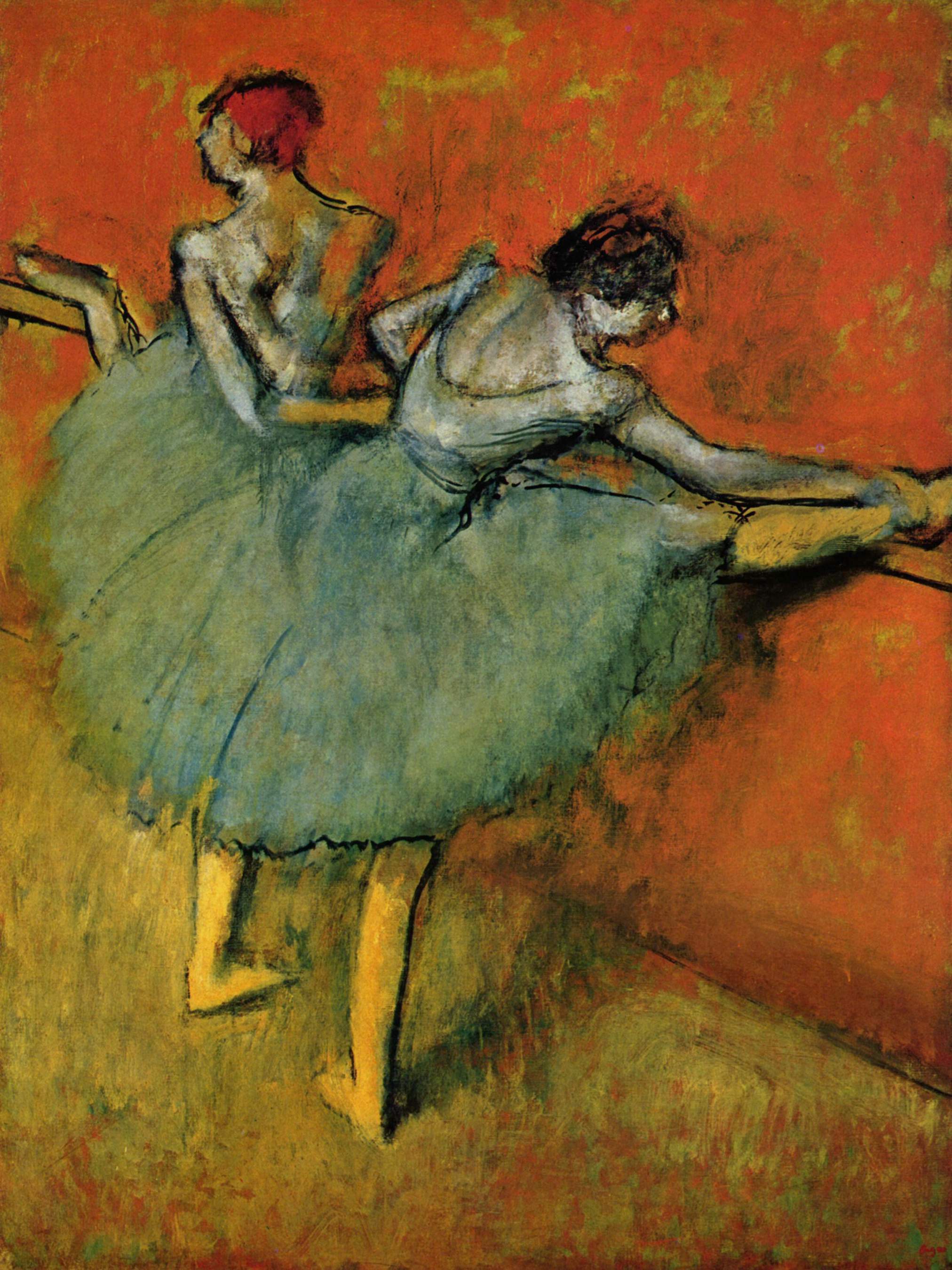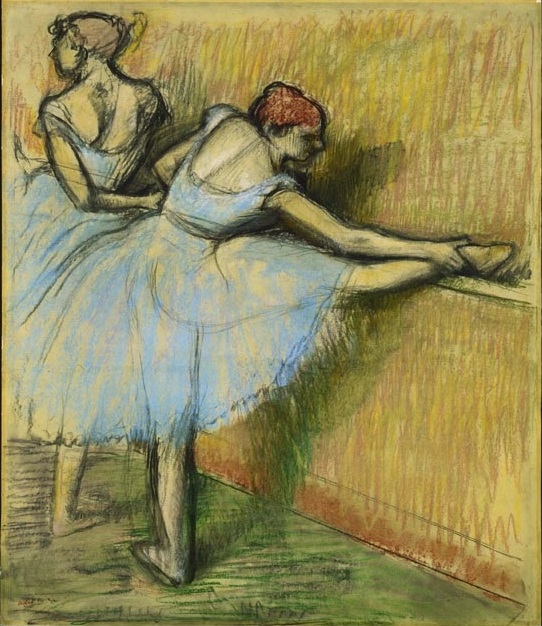art-Degas.com
Edgar Degas 1834-1917
Edgar Degas - Dancers at the Barre 1905
 Dancers at the Barre |
From Philips Collection, Washington:
The impressionist master’s relentless experiments with movement and dance culminated in Dancers at the Barre (early 1880s–c. 1900), one of the greatest works in The Phillips Collection. The exhibition brings together about 30 related paintings, works on paper, and bronzes, created between 1870 and 1900, from some of the world’s greatest collections, including the NY Carlsberg Glyptotek, Copenhagen; Nasjonalgalleriet, Oslo; the British Museum, London; the Metropolitan Museum of Art and the Solomon R. Guggenheim Museum, New York; the National Gallery of Canada, Ottawa; and the Corcoran Gallery of Art and Hirshhorn Museum and Sculpture Garden, D.C. The exhibition also features work by Degas in the Phillips’s permanent collection.
Degas’s process mirrored the rote and repetition, point and counterpoint of ballet—he repeated himself obsessively, tracing and refining compositions over decades, and reproducing the same subjects from multiple perspectives in a range of media. He often produced studies for individual dancers or small groups then combined their figures in new compositions. Occasionally, he stripped away costume to deepen his understanding of anatomy and posture. Dancers at the Barre is reunited with full-scale pastel and charcoal sketches of its dancers shown individually and together, nude and clothed, for the first time since they were in the artist’s possession.

Dancers at the Bar
1900 111x96cm
pastel/cardboard
National Gallery of Canada
From National Gallery of Canada:
Degas chose the uncomfortable pose of stretched arms and legs to empha-size the energy required for this exercise at the bar. The repeated strokes of charcoal give weight to the contours of the dancers' bodies. Degas worked delicately with pastel to create the diaphanous tutus and to suggest the light reflected in the room. He made several drawings of these two dancers, posed exactly as in the pastel, as well as an oil painting, now in The Phillips Collection, Washington, D.C.